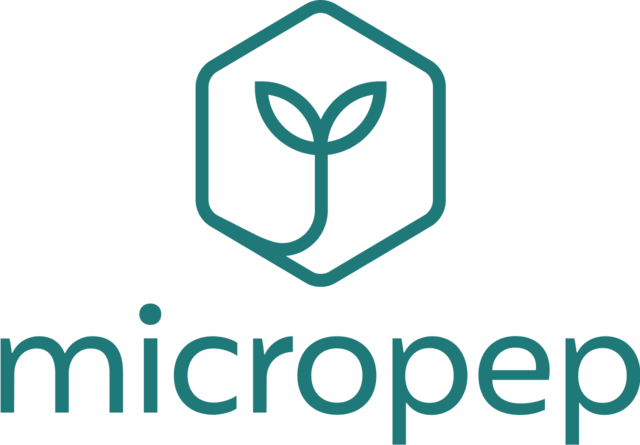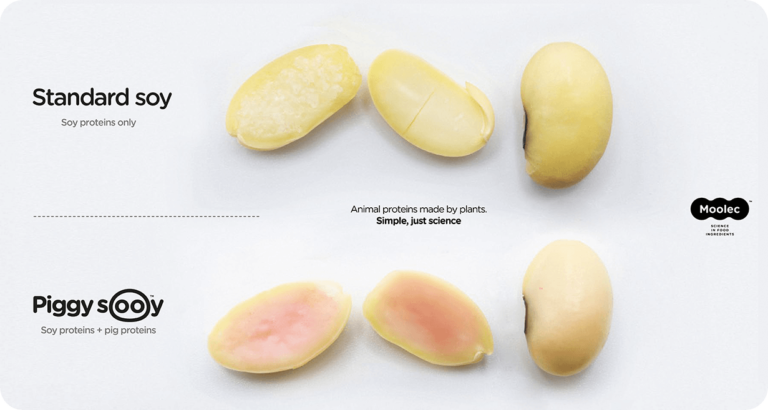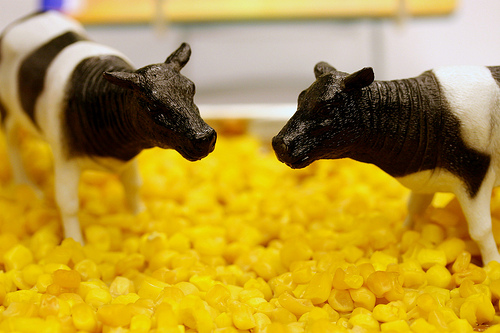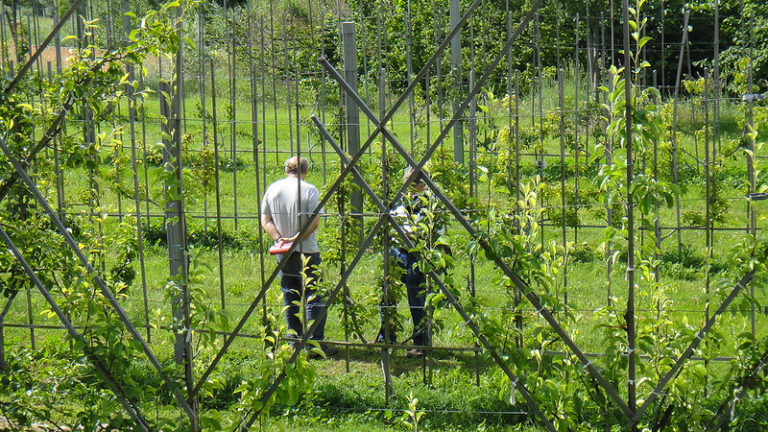Actualités
The CTPS wants to believe in the promises of the new GMOs

The Permanent Technical Committee on Plant Breeding (CTPS), the advisory and inter- professional body in charge of seed management, is organising the confusion. A report by its Scientific Committee, published in December 2022, proposes to distinguish between “edited varieties” and “GMO varieties”. However, under French and European law, there is no such thing as “edited varieties”. This term was invented by the industry so that “new” GMOs are no longer considered as GMOs, and therefore no longer assessed or labelled. The CTPS therefore de facto supports the GMO deregulation project proposed by the industry and implemented by the European Commission.
In December 2022, the Permanent Technical Committee on Plant Breeding (CTPS) was asked by the Ministry of Agriculture to publish a report by its Scientific Committee, the aim of which was to “shed light, on the basis of the scientific and technical literature, on the impact of the development of new genome editing techniques on the evaluation of varieties and their marketing” [1]. A vast project, whose title is in itself already a bias?
The seed industry’s novlanguage
The report uses several expressions to designate GMOs. By changing the name, by deliberately choosing acronyms or expressions proposed by the seed industry, the report directs the light it wishes to shed on this debate. In particular, it uses the acronym “NBT” translated into French as “nouvelles techniques de sélections” (in English, New Breeding Techniques), or “genome editing” to refer to certain non-transgenic GMOs.
The techniques covered by this report are, for example, directed mutagenesis, which uses nucleases (Crispr/Cas9, Talen, etc.), cisgenesis/intragenesis, or modulation of gene expression by DNA methylation. However, these techniques result in GMOs that can be described as “new” since they have been developed mainly since 2001, the year of adoption of European Directive 2001/18 [2]. These techniques result in GMOs that cannot be exempted by the Directive, as they do not benefit from the history of safe use, as clarified by the Court of Justice of the European Union (CJEU) in its judgment of 25 July 2018 [3]. Therefore, the report should have, in order to comply with the French, European (or even international) law, talk about GMOs resulting from new genetic modification techniques.
The report goes even further. It states bluntly that “it is important in discussions and reflections to highlight the difference between edited and GMO varieties, in a factual and non-emotional way”. But what are these differences? How do the new techniques of genetic modification not modify genetic material “in a way that does not occur naturally by multiplication and/or natural recombination”?
The CTPS assesses the evolution of techniques
The CTPS sees advantages in the new genetic modification techniques, such as the fact that they allow “fine and precise surgery of genomes” and their capacity to carry out several genomic modifications in parallel, for example on several traits of the same variety. In other words, the CTPS claims that the new GMOs will be more precise than the old ones, but above all that we will finally be able to develop what was promised with transgenesis… In fact, we find the same discourse as at the end of the 1990s when transgenesis arrived: it was more precise than conventional breeding and made it possible to create varieties that were more nutritious, more resistant, more… more and more…
However, the CTPS Scientific Committee does not see “a major revolution among the published materials”. It notes that “the main strategy is to obtain, by site-directed mutagenesis, the effects obtained by other mutation methods, the bulk of the proposed modifications being of the knockout type blocking the expression of a gene”. The CTPS also points to the uncontrolled, or ’off-target’, modifications that these new techniques can produce. It points out that these would be fewer in number than with traditional mutagenesis and that such “expected deleterious effects […] are also potentially sources of variations that can be used in breeding”. Overall, the CTPS therefore seems to emphasise the benefits rather than the potential risks of new genome modification techniques.
The CTPS refers to, but does not explicitly mention, so-called “random mutagenesis” applied to in vitro cultures of plant cells: “Similarly, in vitro culture techniques are known to generate unwanted genetic modifications (mutations, recombinations, chromosomal deletions/translocations) […] or epigenetic modifications (modification of the expression of certain genomic regions, without modification of the DNA sequence). These somaclonal variations can have strong effects on gene expression, morphogenesis and phenotype or on the adaptation of regenerated plants”. However, the CTPS does not draw any regulatory conclusions from this technical finding, although it alone justifies the need to apply the current GMO regulation to plants derived from this technique.
New GMOs will have to be assessed when applying for registration in the seed catalogue. The CTPS emphasises its role by saying that it is able to adapt to such assessments: “For edited traits corresponding to naturally variable characteristics that have already been studied at the time of registration, it does not appear necessary to modify the processes. However, for disruptive innovations that create new traits, an assessment should be made that seeks to characterise both services and disservices, at a time and space scale appropriate to the trait for which improvement is claimed, its use, and its compatibility with other selection methods”.
Towards a genetically modified agroecology?
The notions of ’agroecology’ and new genetic modification techniques have been positively associated for several years, particularly in official discourse. For example, in 2019, the CGAAER (General Council for Food, Agriculture and Rural Areas) already proposed using agroecology as a guarantee for the development of new GMOs: ’[…] the development of agriculture towards agroecology relies in particular on maintaining a capacity for public scientific expertise in the field of genetic engineering and support for a remarkable industry, it is essential not to gamble on the subject getting bogged down at European level. It is important not to turn one’s back on the disruptive innovation offered by NBTs, which requires political will strong “ [4]. Furthermore, François Hollande, President of the Republic, stated in 2015:”the agriculture of tomorrow is agro-ecology which will mobilise agronomy as well as robotics, bio-control, biotechnologies and digital technology« .
The CTPS proposes, in this 2022 report, a “agroecological” measure using NBTs to control weeds that have become resistant to In the case of “phytosanitary”: “NBTs could make it possible to work on several levers to […] remedy [the development of resistance], by promoting allelopathy (all of the biochemical interactions of plants with other plants), by developing varieties that are more competitive with weeds or by targeting traits that allow varieties to adapt to mechanical weeding”. However, the concept of “agroecology” evokes, in the mind of the general public, something natural, if only by its reference to ecology. However, this term is not legally defined, unlike “organic agriculture”, which is specified by a set of specifications. The latter excludes GMOs, for the moment the “new” as well as the old ones (exclusion of the “new” which will disappear if they are no longer qualified as GMOs, as proposed by the European Commission). Agroecology has become a catch-all word, and is in itself a trap.
Intellectual property is still a debate
The report considers that it is necessary to ensure “transparency on the edited traits patented for use in breeding”. The CTPS refers here to the risks faced by traditional seed companies, for whom it is increasingly difficult to avoid using genes or genetic information already patented by the four or five major seed companies. These seed companies may not have the necessary tools to identify those third party patent rights that may cover the varieties they produce or use [5].
The management of the cohabitation between patents and plant variety certificates (PPCs) remains a point of dissension within the seed industry. The Scientific Committee of the CTPS is therefore undecided and proposes two options. The first is to “respect the European regulatory and jurisprudential framework […] which guarantees the articulation with the VOC”. The other proposes the “collective commitment of breeders not to take out patents on published traits and to mobilise the PVC as a lever to guarantee intellectual property and to ensure rapid genetic progress for the agro-ecological transition”.
But this cohabitation also raises, according to the CTPS, the issue of “cross-licences”. It can happen that the holder of a PVC and the holder of a patent are both prevented from marketing their variety because it is covered by the rights of the other. The principle of “cross-licensing” allows each party to license its rights to the other. If the parties do not agree, a “compulsory licence for dependence” may be imposed by the administration. In such case, the administration will have considered that “the variety or invention represents an important technical advance of considerable economic interest in relation to the invention claimed in the patent or the protected plant variety”. This last proposal, which has been around for more than 20 years but has never been used, seems like wishful thinking.
The CTPS as an advocate of new techniques?
“At this stage, it is mainly a question of proofs of concept, on a limited number of agricultural species, with few practical repercussions”: admittedly, the CTPS puts the current contribution of the new techniques into perspective and underlines certain shortcomings, but, for it, the development of these new GMOs is inescapable… Is the CTPS simply positioning itself as an advocate of these new techniques in order to ratify the Ministry of Agriculture’s known position on the subject [6]?
[1] CTPS, Report “Nouvelles techniques génomiques et évaluation des variétés”, 8 December 2022.
[2] European Directive 2001/18, 12 March 2001.
[3] Court of Justice of the European Union, Judgment No. C-528/16, 25 July 2018.
[4] Conseil général de l’alimentation, de l’agriculture et des espaces ruraux, Plan “Semences et plants pour une agriculture durable : État des lieux des compétences de la recherche, de ses besoins, et de l’offre de formation initiale et continue”, March 2019.
[5] , « Brevet & OGM : le système alimentaire sous contrôle », Inf’OGM, 10 January 2023.
[6] , « France – Le gouvernement unanime pour déréguler les nouveaux OGM », Inf’OGM, 30 September 2021.















